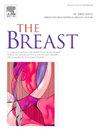Effectiveness of the lymphatic microsurgical preventive healing approach for avoiding breast cancer-related arm lymphedema
IF 7.9
2区 医学
Q1 OBSTETRICS & GYNECOLOGY
引用次数: 0
Abstract
Background
There is currently no proven surgical approach that prevents breast cancer related arm lymphedema (BCRAL). We hypothesized that the lymphatic microsurgical preventive healing approach (LyMPHA) during axillary lymph node dissection (ALND) could reduce BCRAL development.
Study design
We conducted a single-center retrospective cohort study of patients with breast cancer who underwent ALND with or without immediate LyMPHA between 2016 and 2022. Primary outcomes were development of BCRAL and quality of life measures within 4 years of surgery. Secondary outcomes were days to drain removal and postoperative complications. Kaplan-Meier analysis determined risk of BCRAL over time. Cox regression analysis was used to determine risk factors associated with development of BCRAL.
Results
Of 187 patients who underwent ALND, 121 (64.7 %) received LyMPHA and 66 (35.3 %) underwent ALND only. The mean age was 56.4 ± 13.6 years. Patients who underwent LyMPHA had lower risk of lymphedema over time (p = 0.003), lower median percent functional impairment (4.7 % vs 11.6 %, p = 0.045), and shorter median drain duration (13.0 vs 15.0 days; p = 0.042). Regression analysis showed that those who received LyMPHA were half as likely to develop BCRAL (hazard ratio 0.53; 95 % CI 0.28–0.98; p = 0.043). Groups did not differ in the rate of postoperative complications. No other factors were associated with BCRAL, including age, body mass index, smoking status, or history of other cancer therapies.
Conclusion
Performing immediate lymphatic reconstruction with LyMPHA after ALND may prevent arm lymphedema and reduce morbidity in patients with breast cancer.
淋巴显微外科预防愈合方法避免乳腺癌相关上臂淋巴水肿的有效性
背景:目前还没有证实的手术方法可以预防乳腺癌相关的上臂淋巴水肿(BCRAL)。我们假设腋窝淋巴结清扫术(ALND)中淋巴显微外科预防性愈合入路(LyMPHA)可以减少BCRAL的发展。研究设计:我们进行了一项单中心回顾性队列研究,研究对象是2016年至2022年间接受ALND伴或不伴即时淋巴细胞癌的乳腺癌患者。主要结局是BCRAL的发展和手术4年内的生活质量测量。次要结果为引流管取出所需天数和术后并发症。Kaplan-Meier分析确定了BCRAL随时间变化的风险。采用Cox回归分析确定与BCRAL发生相关的危险因素。结果187例行ALND的患者中,121例(64.7%)接受了淋巴瘤治疗,66例(35.3%)仅行ALND治疗。平均年龄56.4±13.6岁。接受淋巴原置换的患者随着时间的推移淋巴水肿的风险较低(p = 0.003),功能损害的中位数百分比较低(4.7% vs 11.6%, p = 0.045),中位数引流持续时间较短(13.0 vs 15.0天;p = 0.042)。回归分析显示,接受淋巴瘤治疗的患者发生BCRAL的可能性降低了一半(风险比0.53;95% ci 0.28-0.98;p = 0.043)。两组术后并发症发生率无差异。没有其他因素与BCRAL相关,包括年龄、体重指数、吸烟状况或其他癌症治疗史。结论乳腺癌ALND术后立即行淋巴重建可预防上臂淋巴水肿,降低发病率。
本文章由计算机程序翻译,如有差异,请以英文原文为准。
求助全文
约1分钟内获得全文
求助全文
来源期刊

Breast
医学-妇产科学
CiteScore
8.70
自引率
2.60%
发文量
165
审稿时长
59 days
期刊介绍:
The Breast is an international, multidisciplinary journal for researchers and clinicians, which focuses on translational and clinical research for the advancement of breast cancer prevention, diagnosis and treatment of all stages.
 求助内容:
求助内容: 应助结果提醒方式:
应助结果提醒方式:


